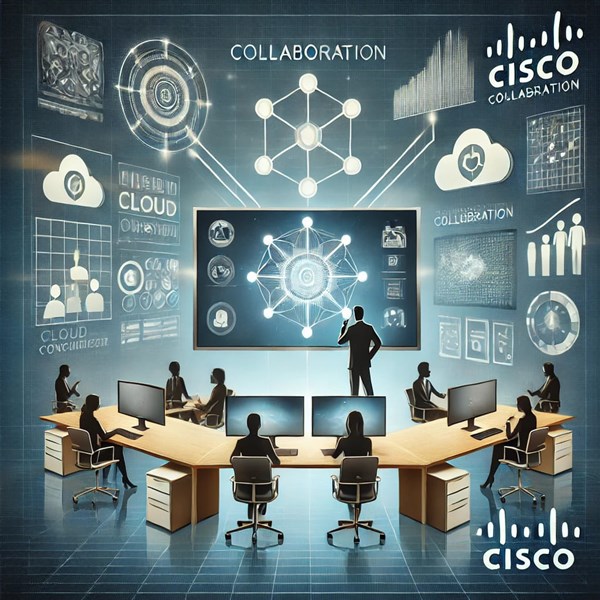
Cisco Collaboration solutions, including Cisco Webex, Unified Communications Manager (CUCM), Jabber, and Meeting Server, are widely used for seamless communication and collaboration across businesses. However, like any technology, these tools can encounter technical issues that disrupt communication, impact productivity, and cause frustration among users.
In this guide, we will explore some of the most common problems users face with Cisco Collaboration solutions and provide troubleshooting tips to resolve them effectively.
Troubleshooting Common Issues in Cisco Collaboration Solutions
1. Cisco Webex Connectivity Issues
Problem:
Users experience connection failures or Webex meetings fail to start due to network restrictions, firewall settings, or bandwidth limitations.
Troubleshooting Steps:
✅ Check Network Connectivity – Ensure your internet connection is stable and meets Webex’s bandwidth requirements.
✅ Verify Firewall and Proxy Settings – Allow access to Webex domains (*.webex.com) in your network firewall.
✅ Test Webex Media Quality – Use the Webex "Health Checker" to diagnose connectivity issues.
✅ Update Webex Client – Ensure users are using the latest version of the Webex app.
💡 Pro Tip: Use Webex Network Test Tool to check real-time connectivity issues.
2. Audio and Video Quality Issues in Webex Meetings
Problem:
Users report poor audio/video quality, frozen screens, or dropped calls during Webex meetings.
Troubleshooting Steps:
✅ Check Network Bandwidth – Ensure a minimum of 1.5 Mbps for HD video calls.
✅ Reduce Background Applications – Close unnecessary apps consuming bandwidth.
✅ Switch Audio Output Device – Ensure the correct microphone and speaker are selected.
✅ Adjust Video Settings – Lower the video resolution to reduce bandwidth usage.
✅ Use a Wired Connection – Ethernet is more stable than Wi-Fi for Webex meetings.
💡 Pro Tip: Webex has a "Call Me" feature that allows users to join via PSTN (phone network) for better call quality.
3. Cisco Unified Communications Manager (CUCM) Call Failures
Problem:
Users report dropped calls, failed outbound/inbound calls, or one-way audio on Cisco CUCM.
Troubleshooting Steps:
✅ Check SIP Trunk and Gateway Configuration – Ensure SIP trunks are registered and properly routed.
✅ Verify Codec Mismatch – Ensure both endpoints use the same codec (G.711, G.722, Opus).
✅ Check Media Resource Availability – Insufficient DSP resources can cause call failures.
✅ Review Call Logs in RTMT – Cisco Real-Time Monitoring Tool (RTMT) helps identify errors.
✅ Restart CUCM Services – Use CLI commands or CUCM Serviceability to restart affected services.
💡 Pro Tip: Enable Cisco Unified Serviceability CDR Reports to analyze call failure trends.
4. Cisco Jabber Login and Presence Issues
Problem:
Users are unable to log in to Jabber, or their presence status is not updating correctly.
Troubleshooting Steps:
✅ Verify Cisco IM&P Server Connection – Check that the Cisco Instant Messaging & Presence (IM&P) server is running.
✅ Check DNS and SRV Records – Ensure proper SRV records (_cisco-uds._tcp) for Jabber authentication.
✅ Clear Jabber Cache and Reset Configuration –
- Navigate to C:\Users<username>\AppData\Roaming\Cisco\Jabber
-
Delete cache files and restart Jabber.
✅ Ensure Correct Credentials – Reset passwords and re-authenticate if needed.
✅ Check Cisco Expressway Connectivity – If using Jabber MRA, ensure Expressway is functioning correctly.
💡 Pro Tip: Use the Cisco Jabber Problem Report Tool to diagnose login failures.
5. Cisco Collaboration Call Transfer and Forwarding Issues
Problem:
Users experience call transfer failures, forwarding not working, or delayed call routing on CUCM or Webex Calling.
Troubleshooting Steps:
✅ Check CUCM Call Routing Policies – Ensure call forward rules are configured correctly.
✅ Verify Call Permission Settings – Ensure CSS (Calling Search Spaces) and Partitions allow forwarding.
✅ Check SIP Trunk Configuration – Ensure correct SIP headers are passed for call transfers.
✅ Confirm Device Registration – Phones must be registered with CUCM for call forwarding to work.
✅ Review Call Logs – Use CUCM Call Detail Records (CDR) to analyze call transfer failures.
💡 Pro Tip: Enable SIP Early Media for better call handling between different VoIP providers.
6. Cisco Meeting Server (CMS) Video Conferencing Failures
Problem:
Cisco Meeting Server (CMS) fails to start conferences, or users cannot join video calls.
Troubleshooting Steps:
✅ Check SSL Certificates – CMS requires valid TLS certificates for secure communication.
✅ Verify SIP and H.323 Configurations – Ensure correct SIP registrar settings for endpoint registration.
✅ Confirm CMS Licenses – Lack of multiparty licenses can prevent users from joining calls.
✅ Check Firewall and NAT Rules – Ensure RTP/RTCP traffic is allowed for video communication.
✅ Restart CMS Services – Use the cms system restart command for service recovery.
💡 Pro Tip: Use Cisco Meeting Server WebAdmin to troubleshoot and monitor conference sessions.
7. Cisco Collaboration Security and Compliance Issues
Problem:
Organizations struggle with security risks, unauthorized access, and compliance issues in Cisco Collaboration environments.
Troubleshooting Steps:
✅ Enable End-to-End Encryption (E2EE) – Protect sensitive Webex and CUCM calls.
✅ Use Multi-Factor Authentication (MFA) – Add an extra layer of security for Jabber and Webex users.
✅ Enforce Role-Based Access Control (RBAC) – Restrict administrator and user permissions.
✅ Regularly Update Cisco Security Patches – Keep CUCM, Webex, and CMS up-to-date.
✅ Monitor Cisco Umbrella Reports – Detect and block suspicious collaboration traffic.
💡 Pro Tip: Implement Cisco SecureX for automated threat detection in Cisco Collaboration platforms.
Final Thoughts
Cisco Collaboration solutions are powerful tools that enhance communication and productivity, but they can encounter technical challenges. By following the troubleshooting steps outlined above, IT teams can quickly resolve common issues and ensure smooth operations.
Key Takeaways:
✔️ Always check network connectivity and bandwidth for Webex and CUCM.
✔️ Use Cisco RTMT and Call Detail Records (CDR) for diagnosing call failures.
✔️ Ensure proper SIP trunk, codec, and firewall settings for voice and video communication.
✔️ Keep Jabber, Webex, and CUCM updated to avoid software-related bugs.
✔️ Implement security best practices like MFA and end-to-end encryption.
By staying proactive and following these best practices, businesses can maximize the efficiency and reliability of Cisco Collaboration solutions. 🚀
Offered by Koenig Solutions, a leading IT training company, these certification courses are designed to equip IT professionals with the skills they need to troubleshoot and resolve issues in Cisco Collaboration Solutions effectively. Not only does this training enhance your problem-solving skills, but it also adds value to your professional profile, making you a sought-after asset in the IT industry.







COMMENT